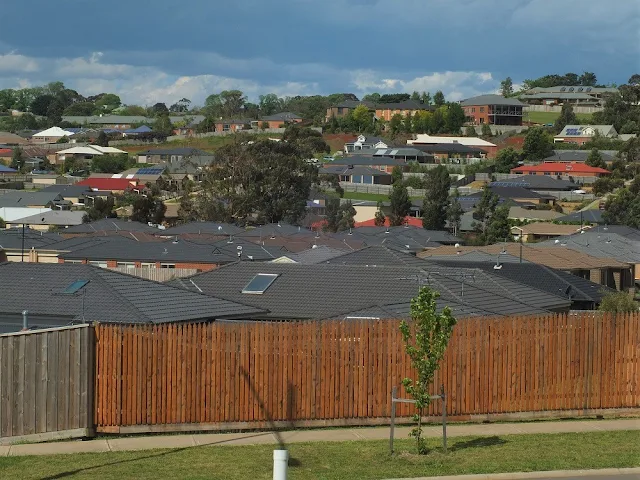Drouin's trees play an important role in defining our town. The social, environmental, economic and aesthetic values of Drouin's trees are important to the community.
There is no shortage of evidence that shows access to natural environments are important for health and well-being.
Development cannot be halted, but sensitive strategies need to be employed in order to ensure our town retains as much as possible of one of its best assets – the trees.
 |
| A sea of rooftops |
Sensitive development will require the cooperation of many bodies – the developer, the Shire and local authourities, the neighbours, the architects, the contractors, etc.
Many of Drouin's magnificent trees are remnants of the forests that originally stood here and their preservation is vital in providing the environmental, economic and aesthetic values they offer.
Compaction, trenching, pruning and removal are all activities that can seriously affect the tree cover during development.
Removing 'all' the trees in an area can completely unbalance the ecological factors, change the microclimate, raise the ambient temperature, increase erosion, etc.
Removing 'just one or two' trees is not wise either in many circumstances. Trees structurally support one another and removing even a single tree from a group can cause a decline in the remainder.
 |
| Worth saving? |
Wise developers are aware that retaining tree cover provides immediate aesthetic and economic benefits, reduces site preparation costs, generates good relationships with the neighbours, authourities and the public in general.
 |
| 90+ homes and no trees? |
In an increasingly urbanized town, the focus on sustainable development is more important than ever and the complex relationship between environmental, economic and social processes needs particular attention.
Should the community allow private profit to destroy Drouin's special urban tree cover?




